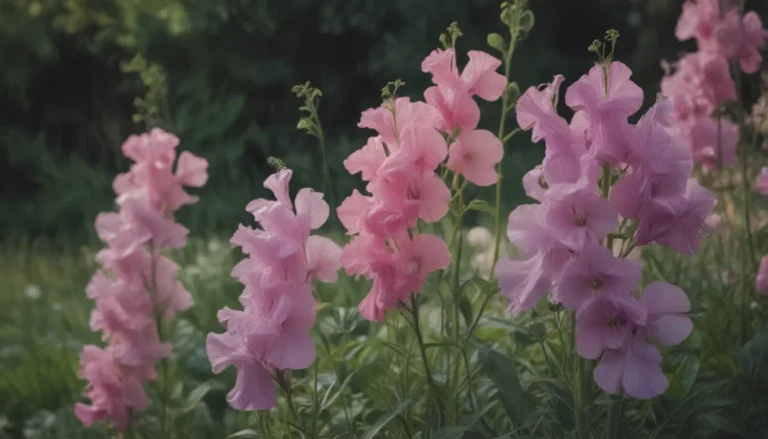Top Deer-Resistant Shrubs for a Beautiful Landscape

Landscaping with shrubs can add beauty and structure to your outdoor space. However, if you live in an area with a high deer population, you may find that these gentle creatures see your plants as a tasty snack. While no plant is completely deer-proof, there are shrubs that are less likely to be nibbled on by deer when other food sources are scarce.
Deer can be quite destructive to your landscape, especially during the winter months when their natural food sources are limited. To protect your shrubs from becoming a deer buffet, it’s essential to choose varieties that are deer-resistant. These shrubs may not be a deer’s first choice, but they will provide beauty and functionality to your landscape without being devoured by hungry deer.
Tips for Planting Deer-Resistant Shrubs:
- Remember that “deer-resistant” does not mean “deer-proof.” Some animals may still choose to nibble on these shrubs, especially when food options are limited.
- Monitor your plants regularly for signs of deer damage and take action to protect them if necessary.
- Consider using row covers, fencing, or other barriers to keep deer away from your shrubs.
- Incorporate motion-sensor lights into your landscape to deter deer from entering your property.
Here are 10 of the best deer-resistant shrubs to consider for your landscaping needs:
Boxwood (Buxus)
Boxwoods are broadleaf evergreens that are popular for creating hedges. These shrubs require annual pruning to maintain their shape and remove any unhealthy parts. Boxwoods contain alkaloids that are distasteful to deer, making them a great choice for deer-prone areas.
- USDA Growing Zones:
- Color Varieties:
- Sun Exposure:
- Soil Needs:
Juniper (Juniperus sp.)
Junipers are members of the cypress family and are known for their heavy fragrance. Deer tend to avoid plants with strong smells, making junipers a good choice for deer-resistant landscaping. Varieties like blue star juniper and Pfitzer Chinese juniper offer different looks for your outdoor space.
- USDA Growing Zones:
- Color Varieties:
- Sun Exposure:
- Soil Needs:
Arrowwood Viburnum (Viburnum dentatum)
Arrowwood viburnum is a versatile shrub that produces white flowers in the spring, bluish berries, and reddish fall foliage. This deer-resistant shrub can grow up to 10 feet tall and requires annual pruning to control its height and spread.
- USDA Growing Zones:
- Color Varieties:
- Sun Exposure:
- Soil Needs:
Andromeda (Pieris japonica)
Andromeda is a dense, flowering shrub that offers showy flowers and a powerful aroma in the early spring. Deer tend to avoid eating this plant due to its scent. Pruning is necessary to maintain the shape of this shrub and protect it from cold winter winds.
- USDA Growing Zones:
- Color Varieties:
- Sun Exposure:
- Soil Needs:
Bluebeard (Caryopteris)
Bluebeard, also known as the blue mist shrub, blooms in late summer and attracts pollinators while repelling deer with its heavy scent. Regular pruning is essential to keep this shrub well-shaped and flowering throughout the season.
- USDA Growing Zones:
- Color Varieties:
- Sun Exposure:
- Soil Needs:
Russian Sage (Perovskia atriplicifolia)
Russian sage is a drought-tolerant subshrub with bluish flowers and silvery-gray foliage. This deer-resistant plant spreads via underground runners and requires minimal maintenance to thrive in your landscape.
- USDA Growing Zones:
- Color Varieties:
- Sun Exposure:
- Soil Needs:
Butterfly Bush (Buddleia davidii)
The butterfly bush is a favorite among pollinators and adds a striking visual element to your landscape. New cultivars like ‘Blue Chip’ are less invasive and more compact, making them ideal for smaller gardens. Deer tend to avoid butterfly bushes, making them a great choice for deer-prone areas.
- USDA Growing Zones:
- Color Varieties:
- Sun Exposure:
- Soil Needs:
Shrub Roses (Rosa sp.)
Shrub roses are a good choice for deer-prone areas due to their thorny stems that deer dislike. Varieties like Candy Oh offer beautiful blooms and fragrant flowers throughout the summer, attracting pollinators to your garden.
- USDA Growing Zones:
- Color Varieties:
- Sun Exposure:
- Soil Needs:
Bayberry (Myrica pensylvanica)
Bayberry is a native shrub to eastern North America known for its fragrant foliage that deters deer. This deer-resistant plant is tolerant of drought, erosion, and salt, making it a versatile choice for your landscape.
- USDA Growing Zones:
- Color Varieties:
- Sun Exposure:
- Soil Needs:
Daphne (Daphne x burkwoodii ‘Carol Mackie’)
Daphne ‘Carol Mackie’ is a variegated shrub with extremely fragrant flowers that are unappealing to deer. This shrub requires specific growing conditions, including well-draining soil and proper moisture levels, to thrive in your landscape.
- USDA Growing Zones:
- Color Varieties:
- Sun Exposure:
- Soil Needs:
While these deer-resistant shrubs are excellent choices for your landscaping needs, it’s essential to remember that no plant is entirely immune to deer browsing. Regular monitoring and proper care will help protect your shrubs from deer damage and ensure a beautiful landscape for years to come. By selecting deer-resistant shrubs and incorporating protective measures into your landscaping plan, you can create a beautiful outdoor space that is both functional and appealing.
In addition to shrubs, there are also deer-resistant trees that you can incorporate into your landscape design. By selecting a variety of deer-resistant plants and taking steps to protect them from browsing deer, you can create a beautiful and low-maintenance landscape that will thrive for years to come. Whether you choose shrubs, trees, or a combination of both, deer-resistant plants can help you create an outdoor space that is both beautiful and resilient.





